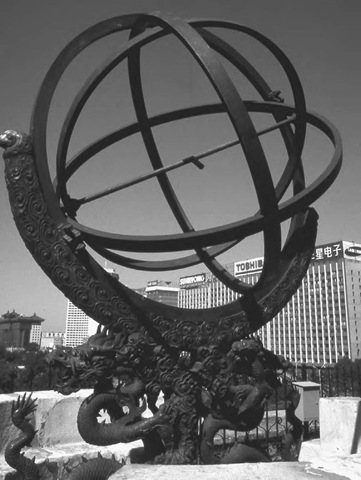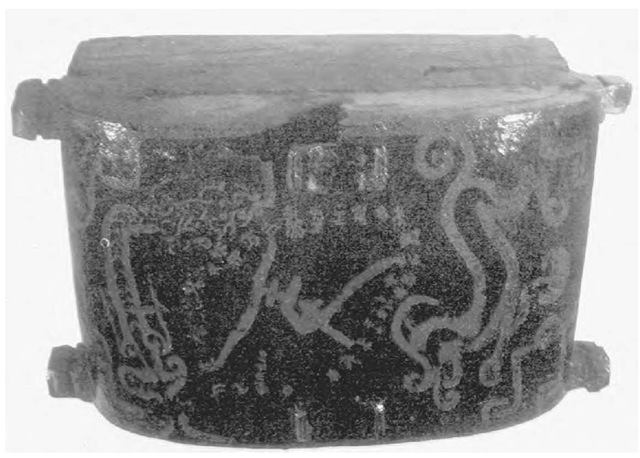The political history of ancient China was no less turbulent than that of many other parts of the world. From about 4000 b.c.e. onwards it developed from a multitude of farming villages into warring local chiefdoms, and these gradually confederated into larger competing states ruled by powerful dynasties. The best known of these are the Shang and Zhou, which successively controlled ever greater swathes of eastern China during the second and first millennia b.c.e. Yet despite all this social turmoil, a characteristic cultural tradition emerged that is instantly recognizable in arts, crafts, and architecture. One reason is that it arose in geographical isolation from other developing cultures farther west. In 221 b.c.e., China was unified, thus forming one of the world’s greatest empires. Further great dynasties, such as the Han, T’ang, Song, Yuan (when China was under Mongul control), Ming, and finally the Qing, endured until the Chinese revolution of c.e. 1911. Imperial China is characterized at various stages by impressive and highly distinctive developments in scholarship, literature, and art.
Many aspects of Chinese astronomy, from ancient times to the later imperial dynasties, are equally distinctive. Some of the earliest Chinese records of astronomical events, for example, are found on divinatory devices known as oracle bones that date to the Shang and Zhou dynasties. These were animal bones or turtle shells heated with a hot needle until cracks appeared in their surface. The shape of the cracks provided prognostications used by kings to assist in affairs of state. Fortunately for modern scholars, the prognostication was recorded on the bone itself, together with the eventual outcome (tending to confirm that the prognostication was correct). Some oracle bones relate to astronomical events, including both solar and lunar eclipses, and form the earliest Chinese records of such phenomena.
One of the collection of astronomical instruments on the roof of the Old Observatory in Beijing, China.
In the ensuing centuries and millennia of China’s imperial era, the recording of occurrences in the skies became systematized. Yet in China, unlike (for example) in ancient Babylonia, a clear distinction was maintained between what we might see as scientific (astronomical) and divinatory (astrological) traditions. The first was predicated on the regularity of calendri-cal cycles, which could be established through careful observation and recording and then reliably predicted. The latter concerned unpredictable phenomena, which had divinatory significance: these were omens to be noted and acted upon. There were even separate practitioners: experts in cal-endrical methods and experts in celestial patterns (whom we might choose to categorize as astrologers). Both were highly valued state employees. The goal of the state astronomers, and their principal raison d’etre, was to produce ever more detailed and accurate almanacs that would reinforce (perceptions of) the emperor’s control of order in the cosmos. The purpose of the astrologers, on the other hand, was to warn the emperor of portents in the skies and aid him in making crucial decisions. Rulers felt they had a mandate from heaven, but if they ignored signs of approval or disapproval and failed to act accordingly, consequences could be dire. The two sets of records—calendrical and astrological—combine to bequeath us an unparalleled data set of observations of astronomical events, both regular and recurrent (such as planetary motions) and transient (one-off), such as the appearance of comets, novae, meteor showers, aurorae, sunspots, and of course eclipses.
Occasionally, a form of celestial phenomenon would pass from the domain of divination to that of calendrics when its underlying regularity was discovered. The classic example of this in the Chinese case is that of lunar eclipses. Around the year 0, the Chinese discovered a cycle of ten years and 334 days (135 lunations), which, like the longer Saros cycle discovered by the Babylonians, defines a period after which a lunar eclipse will tend to recur. With this discovery lunar eclipses essentially became predictable, and while they continued to be recorded, they ceased from this point to have any significance as omens.
A landmark in ancient Chinese astronomy was the development of a distinctive reference system that enabled specialists to map stars, to note the positions of the sun, moon, planets, or transient phenomena, and to reckon time at night. This was the system of twenty-eight xiu or lunar lodges. These are best conceptualized as twenty-eight regions into which the sky was divided like the segments of an orange and which were identified by convenient stars and asterisms situated within them. If the xiu had been of equal width, the moon would have moved from one to the next in each twenty-four-hour period. However, the widths varied considerably, and the moon could spend two or three nights in a very wide xiu, but only a few hours in a narrow one.
Chest from the tomb of Marquis Yi of Zeng (late fifth century B.C.E.) featuring a representation of the asterisms marking the twenty-eight lunar mansions.
In Imperial China, astronomy was inextricably linked to the supreme power of the emperor, who was seen as uniquely able to harness the sacred forces of the heavens and preserve the balance and harmony of the cosmos in the service of the people. This power was reflected (and the emperor’s right to rule thereby reinforced) both in the spatial layout of the palace and in the timing of appropriate rituals. From the Ming dynasty (fourteenth century) onwards, the imperial palace—otherwise known as the Forbidden City—was in the heart of Beijing and was approached along the meridian, directly toward the north celestial pole, which was seen as the very heart of the heavens. The Emperor moved around the sacred capital on prescribed paths at different seasons, leaving the palace so as to undertake rituals at various nearby shrines at the appropriate times. Two of the most important ceremonies took place at the solstices, when the emperor was required to actively assist in the transitions between the seasons. At winter solstice, he ascended the Round Mound, the highest part of the Temple of Heaven complex to the south of the Forbidden City, climbing up from the south and publicly paying homage by himself facing the center of the heavens in the north. At other times, subjects permitted to visit the emperor in the Forbidden City were required, similarly, to approach his throne—the center of the earthly realm—from due south.
Chinese astronomers established an impressive record in the development and construction of astronomical instruments. One of the most remarkable is a giant gnomon, in the form of a brick tower, built by the astronomer Guo Shou Jing in c.e. 1276. This enabled Guo to establish the length of the tropical (seasonal) year with an error of only twenty-six seconds. A collection of large Bronze instruments that were used for mapping and timekeeping can now be found on the roof of the Old Observatory in Beijing.
However, it is as well to remember the context in which these achievements took place. There was certainly a demand for ever greater astronomical and calendrical precision, but it resulted ultimately from the perceived need for the emperor to maintain cosmic harmony. In other words, the reasons astronomy was maintained at such a high level for so long in Imperial China were ultimately ideological and political rather than purely scientific, at least as we would see it.


